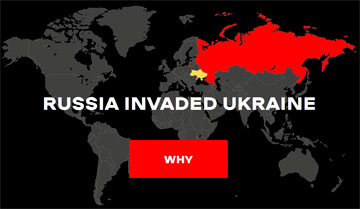Red Hat update for qemu-kvm-rhev
| Risk | High |
| Patch available | YES |
| Number of vulnerabilities | 3 |
| CVE-ID | CVE-2017-11334 CVE-2017-14167 CVE-2017-15289 |
| CWE-ID | CWE-125 CWE-119 CWE-787 |
| Exploitation vector | Local network |
| Public exploit | N/A |
| Vulnerable software |
Red Hat Virtualization Server applications / Virtualization software |
| Vendor | Red Hat Inc. |
Security Bulletin
This security bulletin contains information about 3 vulnerabilities.
1) Out-of-bounds read
EUVDB-ID: #VU12552
Risk: Low
CVSSv4.0: 1.2 [CVSS:4.0/AV:A/AC:L/AT:N/PR:L/UI:N/VC:N/VI:N/VA:L/SC:N/SI:N/SA:N/E:U/U:Clear]
CVE-ID: CVE-2017-11334
CWE-ID:
CWE-125 - Out-of-bounds read
Exploit availability: No
DescriptionThe vulnerability allows an adjacent authenticated attacker to cause DoS condition on the target system.
The weakness exists due to out-of-bounds read. An adjacent attacker can cause the service to crash by leveraging use of qemu_map_ram_ptr to access guest ram block area.
Install updates from vendor's website.
Red Hat Virtualization: 4
CPE2.3 External linkshttps://access.redhat.com/errata/RHSA-2017:3369
Q & A
Can this vulnerability be exploited remotely?
Yes. This vulnerability can be exploited by a remote authenticated user via the local network (LAN).
Is there known malware, which exploits this vulnerability?
No. We are not aware of malware exploiting this vulnerability.
2) Memory corruption
EUVDB-ID: #VU12300
Risk: High
CVSSv4.0: 6.3 [CVSS:4.0/AV:A/AC:L/AT:N/PR:N/UI:N/VC:H/VI:H/VA:H/SC:N/SI:N/SA:N/E:U/U:Amber]
CVE-ID: CVE-2017-14167
CWE-ID:
CWE-119 - Memory corruption
Exploit availability: No
DescriptionThe vulnerability allows an adjacent attacker to execute arbitrary code on the target system.
The weakness exists in the load_multiboot function in hw/i386/multiboot.c due to integer overflow. An adjacent attacker can execute arbitrary code via specially crafted multiboot header address values, which trigger an out-of-bounds write.
Successful exploitation of the vulnerability may result in system compromise.
Install updates from vendor's website.
Red Hat Virtualization: 4
CPE2.3 External linkshttps://access.redhat.com/errata/RHSA-2017:3369
Q & A
Can this vulnerability be exploited remotely?
Yes. This vulnerability can be exploited by a remote non-authenticated attacker via the local network (LAN).
Is there known malware, which exploits this vulnerability?
No. We are not aware of malware exploiting this vulnerability.
3) Out-of-bounds write
EUVDB-ID: #VU11790
Risk: Low
CVSSv4.0: 4.6 [CVSS:4.0/AV:A/AC:L/AT:N/PR:L/UI:N/VC:N/VI:N/VA:H/SC:N/SI:N/SA:N/E:U/U:Clear]
CVE-ID: CVE-2017-15289
CWE-ID:
CWE-787 - Out-of-bounds write
Exploit availability: No
DescriptionThe vulnerability allows an adjacent authenticated attacker to cause DoS condition on the target system.
The weakness exists in the mode4and5 write functions in hw/display/cirrus_vga.c due to out-of-bounds write. An adjacent attacker can trigger memory corruption and cause the service to crash via vectors related to dst calculation.
Install updates from vendor's website.
Red Hat Virtualization: 4
CPE2.3 External linkshttps://access.redhat.com/errata/RHSA-2017:3369
Q & A
Can this vulnerability be exploited remotely?
Yes. This vulnerability can be exploited by a remote authenticated user via the local network (LAN).
Is there known malware, which exploits this vulnerability?
No. We are not aware of malware exploiting this vulnerability.
